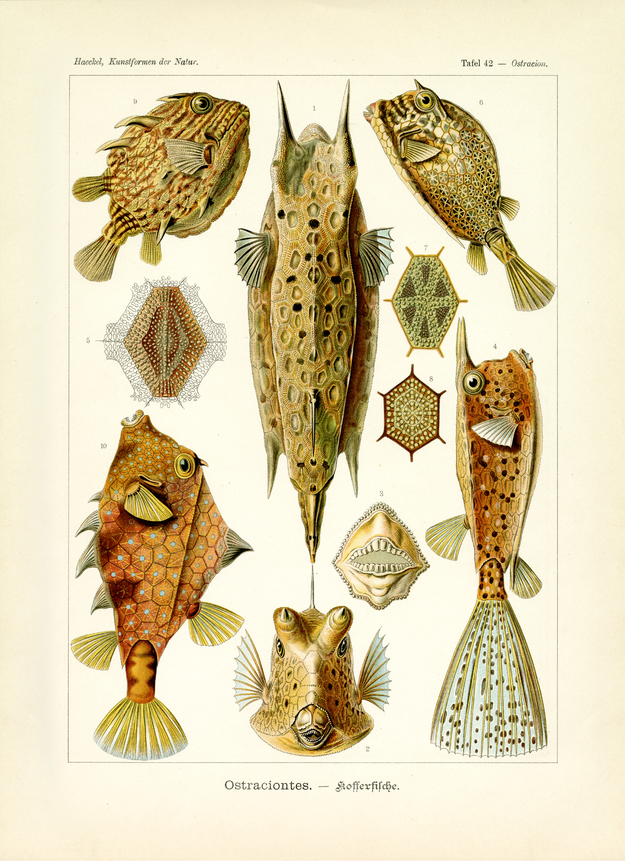Translation of the original German introduction by Ernst Haeckel:
Phylum of Vertebrata (Wirbeltiere); - class of Gnathostoma (Kiefermäuler); - subclass of Pisces (Fische); - subclass of Teleostei (Knochenfische); - order of Plectognathi (Schnabelfische); - family of Sclorodermi (Harthautfische); - subfamily of Ostraciontes (Kofferfische).
Ostraciontes differ in various ways from the usual Teleostei. The short, compact body is usually covered with a rigid bone shell that is composed of hexagonal plates. Only the mouth, the base of the fins and the posterior part of the tail are covered with soft skin so that the muscles that attach to these can move freely. The bones of the ‘upper jaw apparatus’ (upper jaw and intermediate jaw) are firmly grown onto the skull, one lying below the other with the skull giving the appearance of a short beak. Each jaw is armed with a single line of small, slender teeth (fig. 2 and 3). The opening of the small mouth is very narrow, just like the short gill slit that is found right in front of the pectoral fin. The ventral fins have disappeared. The small dorsal fin is found far in the back, almost opposite the similarly appearing anal fin. The considerable tail fin is rounded. The short spine is composed of only fourteen vertebrae. The big eyes are positioned high up on the front head.
Ostracion as a genus contains more than 20 species usually inhabiting tropical seas; many species are armed with quills and characterized by excessive colouration. The solid, usually hexagonally shaped bone plates that compose the hard shell are many a times presenting a delicate cover-art; numerous small tubercles make them appear ornamented with beads; they are usually structured in rows or bands emanating from the centre of the shell plates (fig. 5-8 and 10).
Translation by VR Translators Bangalore
We've scanned the original lithography at 1200dpi on the Epson A3 scanner of A3 scanner huren. You can download a 400dpi JPEG here.
